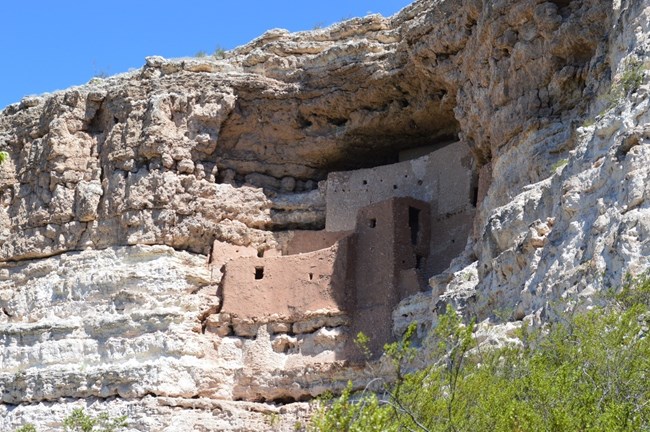Learn about NRCAs
The Natural Resource Condition Assessment (NRCA) Program provides framework, funding, and publishing support to parks to aid in the synthesis and documentation of natural resource conditions. Condition assessment reports are a tool to describe selected park resources, and record a snapshot of their current condition, identify trends, and identify potential or current threats and stressors. Understanding the condition and trend of natural resources is key for parks and NPS planners to appropriately prioritize and allocate stewardship resources.

NPS Photo
Nearby (40 km (25 mi)), Tuzigoot National Monument includes a stretch of the Verde River, the only Wild and Scenic River in Arizona, and Montezuma Castle National Monument includes two of the river’s tributaries, Beaver Creek and Wet Beaver Creek. Diverse assemblages of vegetation, mammals, birds, amphibians, and reptiles offer amazing opportunities for scientific inquiry and interpreting the relationship between the long history of human habitation throughout the Verde Valley and the area’s environment.
Traditional NRCA Report: 2019
Montezuma Castle and Tuzigoot National Monuments are managed jointly. Their Natural Resource Condition Assessment was a collaborative effort between the park staff and other NPS partners. The NRCA for Montezuma Castle and Tuzigoot National Monuments was published in 2019 after analysis of resources with high ecological significance. Ten natural resources were evaluated in this assessment:
- Landscape dynamics |
- Riparian vegetation |
|||||
- Air quality |
- Birds |
|||||
- Hydrology |
- Mammals |
|||||
- Water quality |
- Fish |
|||||
- Upland vegetation and soils |
The majority of resources were found to be in good condition or of moderate concern. Exceptions include fish due to the low diversity of species, which is considered to be of significant concern, and aspects of riparian vegetation due to the presence of invasive, non-native plants. The primary threats to resource conditions within the monuments and throughout the surrounding area include increasing temperatures, drier conditions due to reduced precipitation, changes in adjacent land use due to increasing developments, and increasing water use. Maintaining or improving the Monuments’ resource conditions in light of rapidly changing environmental conditions, such as invasive plants and animals, increasing temperatures, decreasing precipitation, and land use change is challenging. The Monuments’ proximity to the Coconino National Forest provides outstanding opportunities for developing partnerships to achieve shared conservation goals. With the number of landscape-scale changes that are occurring, landscape-scale coordination of resource protection is paramount to resource preservation.
For other reports and natural resource datasets visit the NPS Data Store.
Source: NPS DataStore Collection 7765 (results presented are a subset). To search for additional information, visit the NPS DataStore.
Last updated: February 25, 2022
